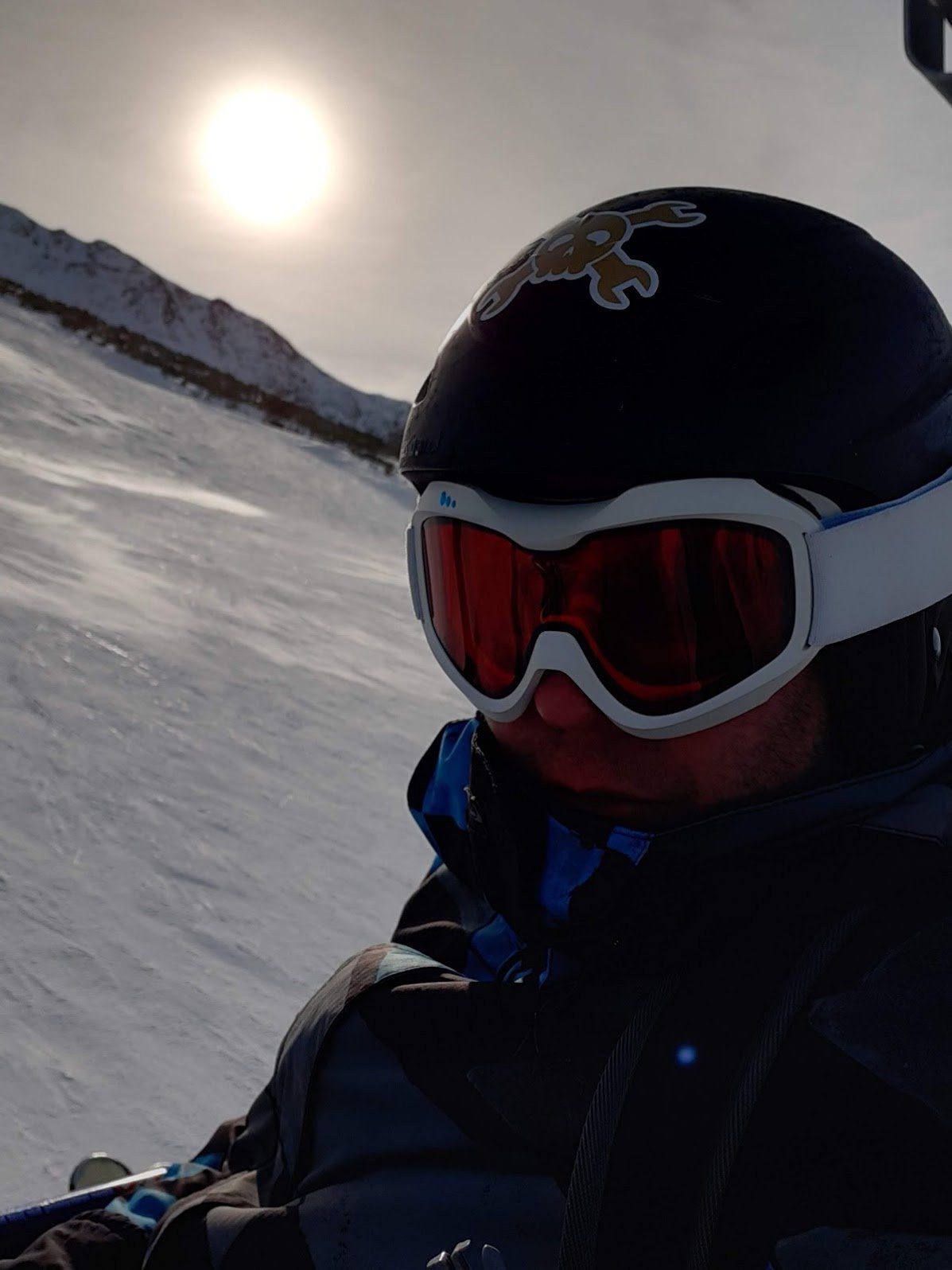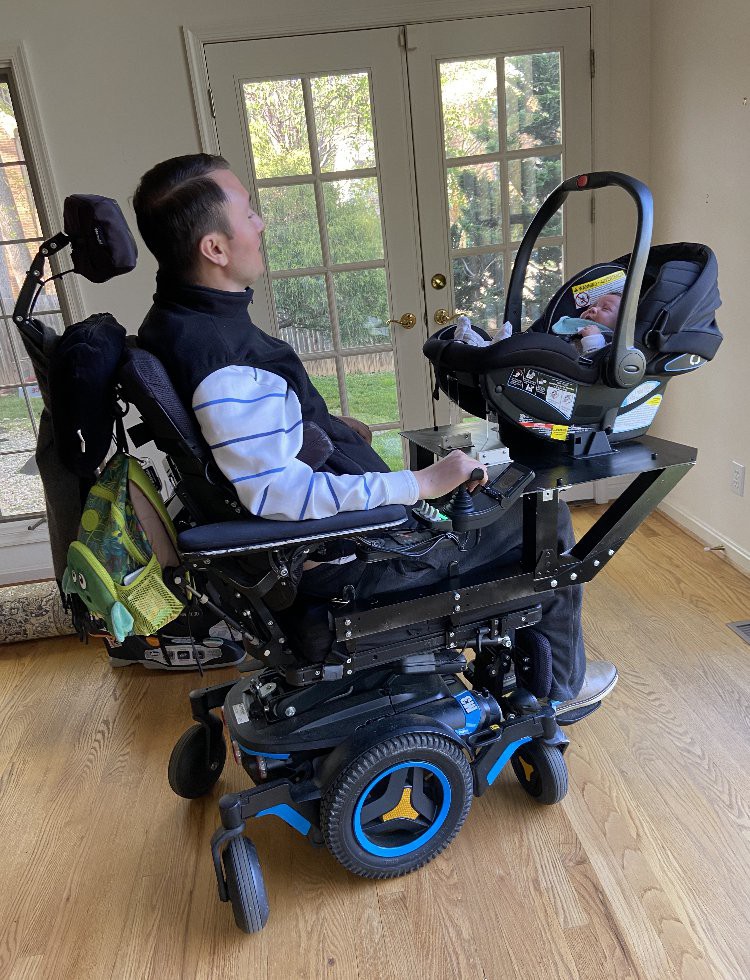
Dan Maloney 3:00 PM
OK, welcome everyone, let's get started. I'm Dan, I'll be modding today along with Dusan as we welcome Nyeli Kratz to the Hack Chat. Today we're talking about biomedical engineering.
|

Walter Lite 3:00 PM
hi dan
|

Dusan Petrovic 3:01 PM
Hello and welcome everyone!
|

Dan Maloney 3:01 PM
Hi Nyeli! Can you kick things off with a little about yourself?
|

Dan Maloney 3:02 PM
@chordophony - Nope, just a text chat, AMA style
|

Nyeli Kratz 3:02 PM
Hi I'm Nyeli! I'm a recent grad from Johns Hopkins University and I studied biomedical engineering and robotics. BME is definitely a broad topic but I'm happy to chat about any of my projects! Some of my favorites are a one-arm-drive standing mobility device for pediatric hemiplegia patients and a wheelchair attachment for a tetraplegic new dad.
|

Walter Lite 3:03 PM
https://www.bme.jhu.edu/academics/bme-design/bme-project-gallery/agilestand-a-novel-one-arm-drive-mobile-stander-for-children-with-hemiplegia/
|

Dan Maloney 3:03 PM
Gotta admit I'm surprised we haven't had anyone in BME on before. I nearly went that way as an undergrad, but, you know, math...
|

Walter Lite 3:03 PM
nice work
|

Nyeli Kratz 3:05 PM
Thank you! BME was an awesome major for undergrad since it gave me a lot of opportunities to apply my technical skills to solve meaningful problems
|

Walter Lite 3:05 PM
are you presenting at RESNA this year ?
|
|
shahmalekim 3:06 PM
Nice Work Nyeli,
is there a plan to add AI to the Agile Stand in future roadmap?
|
|
rothemike 3:06 PM
Hi there, I became a new quadriplegic on October 14, 2023. I would love to hear more about your wheelchair attachment if possible. Thanks for doing what you do
|

Walter Lite 3:06 PM
I spent over 20 years in Cinica and rehab engineering ....
|

Walter Lite 3:07 PM
Clinical
|

Nyeli Kratz 3:07 PM

|
|
shahmalekim 3:07 PM
I am Biomedical engineer and have been focusing on Cybersecurity of medical devices (IoMT) for the past 5 years.
|
|
Thomas Shaddack 3:07 PM
Is there any standard for such attachments? T-slots? Spaced arrays of holes? NATO rails...?
|

Dan Maloney 3:07 PM
So going back to the comment about BME being a broad topic, seems like there needs to be a mix of ME, EE, and even CE involved in a lot of these projects. Do people come into BME with a sort of "concentration" in mind? Or does everyone sort of have to be a generalist?
|

Nyeli Kratz 3:08 PM
Hi @rothemike this was my wheelchair attachment project. Josh Basile is super awesome. He came to us a few months before his baby was due looking for help designing an attachment to his wheelchair to allow him to spend more time one on one with his newborn and this is what we came up with.
|

Walter Lite 3:08 PM
you have to believe that you can make a difference
|

chordophony 3:08 PM
hi Nyeli, those projects look awesome, and it must be great to work on something that can really help people! my daughter is studying BME, and I'm curious about the types of jobs you've found out there where you can work on projects like those? can anyone else offer advice or resources about BME careers?
|

Nyeli Kratz 3:10 PM
At Hopkins we all have concentrations within the major. Mine was imaging and medical devices which is still pretty broad. People can definitely specialize within BME @Dan Maloney. Some other students chose to focus on data science or more on the biology immunoengineering or neuroengineering side
|

Walter Lite 3:10 PM
and ....... try to get funding for your projects
|
|
shahmalekim 3:10 PM
@Dan Maloney , good question, as far as I know people get into biomedical engineering with different backgrounds and in Masters and PhD you can normally pick a stream the more well known ones are "bio-electric, bio-mechanic, bio-chemichal"
|

Nyeli Kratz 3:11 PM
@chordophony I'm currently a software test engineer working on surgical robotics systems for Medtronic. My undergrad background in BME was super helpful for this. A lot of my BME friends have gone into mechanical engineering roles at med tech companies and many also go on to medical school
|

Walter Lite 3:12 PM
https://www.academia.edu/76029569/RESNA_Position_on_the_Application_of_Wheelchair_Standing_Devices?ri_id=1902384
|

Walter Lite 3:14 PM
read ..read ...
|
|
Saren Tasciyan 3:14 PM
Hi Nyeli, are your interests as broad as the field goes? :)
|

RichardCollins 3:14 PM
My brother was C2 and cousin C5 and a friend C4. All quad and all died now. Many people talk about it but difficult to change.
|

Walter Lite 3:15 PM
over 25 years of Engineering .... here
|

Nyeli Kratz 3:15 PM
@Walter Lite yes standing mobility is super beneficial and there aren't any standing mobility devices currently on the market that can be controlled and manually propelled using only one arm. That's the problem my team was addressed with the UNIstand project
|

Nyeli Kratz 3:15 PM

|
|
rothemike 3:16 PM
Occupational therapist seems to be the title here at my hospital and care home. They are like you from James Bond [that QUEU] sorry voice typing
|

Dan Maloney 3:17 PM
OK, now I see -- from the earlier diagram it looked like you could lean forward too much and tip, but those casters prevent that
|

Nyeli Kratz 3:17 PM
@Saren Tasciyan I definitely have broad interests which is part of what drew me to the field in the first place! I think I would get bored doing only software or only mechanical or only electrical
|
|
rothemike 3:17 PM
I like that bracket my intention is to mount a AR for robot arm to my power chair and that looks like a perfect platform for it A R4 that is
|
|
Eris 3:18 PM
i have zero academic backgorund and i'm currently trying to get into making transdermal implants. just trying to learn reading scientific papers at the moment. is there anything specific you think i should know about the field?
|

Walter Lite 3:18 PM
who doing work in myo electrics
|

Nyeli Kratz 3:18 PM
@Eris
|
|
Eris 3:18 PM
hi!
|
|
Saren Tasciyan 3:19 PM
@Nyeli Kratz same here, I have drifted from molecular biology towards engineering over time. :)
|
|
Thomas Shaddack 3:20 PM
There is considerable overlap between medical tech and enhancement tech. The same wearable rig, the same toy apple rolled out now, can do hyperspectral vision (with adequate sensors) or high-contrast or brightness-increase (or other preprocessing) for certain vision faults.
|

Nyeli Kratz 3:21 PM
@Eris I worked in myoelectric prosthetics for 2 years during college. We used surface electrodes at my company but there's tons of cool stuff going on at Hopkins with transdermal electrodes. What sorts of applications are you looking at?
|
|
Thomas Shaddack 3:21 PM
Molecular biology can overlap with BME in the field of eg. implantable sensor arrays.
|
|
Eris 3:21 PM
basically i'm trying to make cat ears
|
|
Saren Tasciyan 3:22 PM
Have you ever had to deal with regulatory challenges?
|

Walter Lite 3:22 PM
see you all at https://www.resna.org/
|

Walter Lite 3:23 PM
https://www.resna.org/
|
|
Eris 3:23 PM
the current leading idea is glueing transdermal implants to my scull with some new type of glue i found papers on and then have magnets on the outside so that the skin doesn't get squished and the catears can deach during extreme loads.
|
|
Thomas Shaddack 3:23 PM
Transdermal is finicky. Could it be done as fully implanted, and going optical or NFC (or combined, RFID/NFC for power, optical as comm) for the through-skin interfacing? Anything that pierces skin is a potential trouble site. That said, cat ears are definitely cool.
|

Walter Lite 3:24 PM
see you all ...take care and enjoy your careers
|

Nyeli Kratz 3:24 PM
@Saren Tasciyan definitely. Getting IRB approval for our UNIstand study was challenging. Typically now that I'm working in industry it's product engineers that are dealing with most of the regulatory stuff, but regulatory stuff is a big part of med tech
|

RichardCollins 3:24 PM
Started with EEG in 1966 and because of my brother and others have keep at it for the decades in between. Many alternative sensors now. I keep up with most of them especially cameras and machine vision. I tried volunteering but need help with building things. Sensors and control systems are useless without help to get the data. It is not possible to do it alone.
|
|
Thomas Shaddack 3:24 PM
Opensource can have the advantage of bypassing the regulatory hell.
|
|
rothemike 3:24 PM
I'm working on a small project right now, I have an MP 6050 and a RP 2040 that I want to put together and make an air mouse that I can mount on a baseball hat. The commercials ices out there are very expensive and I can snap this together for under $30. I feel a lot of accessible devices are DIY.
|
|
rothemike 3:25 PM
Unfortunately I'm voting on an apple air three tablet iPad and typing is extremely difficult difficult
|
|
Eris 3:26 PM
the thing is any currently existing and non implanted mounting mechanism is somewhat uncomfortable and incompatible with for example cuddling with girls. i don't rly understand what you're talking about with under the skin, how would that be cat ear shaped?
|
|
rothemike 3:26 PM
The nice thing about the RP 2040 is there is a USB stack that allows you to do H ID Devices and so the mouse will work in Lennox without drivers
|
|
Saren Tasciyan 3:26 PM
@Thomas Shaddack yes and no. Most users would buy a certified device. But there are cases where DIY open source solutions work around commercial "failures". see insulin injectors. But we really need certified proper solutions for the masses.
|
|
Thomas Shaddack 3:27 PM
True. But it is much easier to come to a bureaucrat with something already working in the wild than begging with a proposal to test.
|
|
Eris 3:28 PM
@Thomas Shaddack i'm assuming actually creating/shaping tissue would be much more complicated.
|
|
Thomas Shaddack 3:28 PM
@eris Bioprinting. But indeed nontrivial.
|
|
rothemike 3:28 PM
Well my helper is here to feed me so I do to G G but I will check back in and read the rest of this chat thank you for putting this on. I will also start a new project on HDI oh, I have a gift but I'll transfer it to here too sorry for all the typos goodbye
|

Nyeli Kratz 3:29 PM
@Thomas Shaddack agreed. Also when projects run out of funding or run into regulatory road blocks they can be kept alive through open source
|
|
Thomas Shaddack 3:29 PM
RP2040 is indeed nice. I fiddled earlier with ATmega32u4 for HID devices. Was nice but less good.
|

Dan Maloney 3:29 PM
Thanks for dropping by @rothemike
|
|
Eris 3:30 PM
@Thomas Shaddack also wouldn't that require immune system surprising drugs so it doesn't get rejected?
|

Nyeli Kratz 3:31 PM
Yeah thank you @rothemike feel free to message me any time I'd love to get more of your take on what's out there with adaptive technology and where we should be focusing our efforts
|
|
Eris 3:32 PM
*suppressing
|
|
Thomas Shaddack 3:32 PM
Thought. Biostuff can be a lot about pressures and flows. The absolute-pressure sensors like BMP280 are extra-cheap. Have only one I2C address which can be mitigated with a I2C multiplexer like TCA9548A. Voila, 8 sensors on one bus or more if the muxes are cascaded.
|

Nyeli Kratz 3:33 PM
@Eris I'm not too familiar with implant devices. Very interesting field but a whole new level of regulatory roadblocks and material biocompatability is not easy
|
|
Eris 3:34 PM
oh the plan is to have this be unofficial underground stuff where we don't need regulations.
|
|
Thomas Shaddack 3:34 PM
Could be handy for flow sensing (differential pressure from two absolute sensors), for fluid level sensing (hydrostatc pressure, for not too high depths the sensor limits will do), or for load/weight sensing (think air mattress divided to array of cells, or a cushioned foot insert with air cells).
|
|
Eris 3:35 PM
though i guess they might be good to look at in case they're there for a reason and i die if i don't follow them.
|
|
Thomas Shaddack 3:35 PM
@eris A lot of prior art is in the hardcode bodymod communities. Including troubleshooting. All sorts of implants, materials. Bioprinting (preferably with own cells so there is no rejection) would be next step.
|
|
Eris 3:36 PM
ooh that does sound quite nice. could you link me to some of the prior art you're referring to?
|
|
Thomas Shaddack 3:37 PM
https://en.wikipedia.org/wiki/Body_hacking
|
|
Thomas Shaddack 3:37 PM
https://en.wikipedia.org/wiki/Body_modification
|
|
Thomas Shaddack 3:37 PM
i'd start here.
|
|
Eris 3:38 PM
oh ok ur just talking about body modding/grinder scene in general. yeah i'm aware. and they do be cool.
|
|
Thomas Shaddack 3:38 PM
Yup. Just add the tech they don't have.
|
|
Eris 3:38 PM
just figured you had some specific stuff in mind
|
|
Thomas Shaddack 3:41 PM
Another thing to mention for the DIY sector. For prosthetics, or generally toys that come into longer-term contact with skin, there are printable antibacterial materials, eg. TPU laced with copper oxide.
|
|
Eris 3:41 PM
couldn't i just use platinum cure silicone?
|
|
Thomas Shaddack 3:42 PM
Or printable conductive TPU (TPE?) that may be useful for electrodes. Experimenting here with tDCS and should try out that material.
|
|
Eris 3:42 PM
using 3d printed molds for that is quite easy and it comes out cleaner than just 3d printing in the first place.
|
|
Eris 3:43 PM
btw does anyone know if there's services offering medical grade titanium SLS?
|

Nyeli Kratz 3:44 PM
@Thomas Shaddack yeah I've seen some really cool stuff in upper limb prosthetics with 3D printed liners with some conductive materials for electrodes
|
|
Thomas Shaddack 3:44 PM
Not sure about the oligodynamic effect of the silicone. Though that may be doable too, by mixing in suitable additives. Liquid-phase precursors are much easier to modify that way.
|
|
Thomas Shaddack 3:46 PM
Tried out a printing resin with 0.1% of methyl violet and 0.2% of brilliant green. Should be self-disinfecting, based on a paper I found about methyl violet in latex paint. But couldn't get to test it.
|
|
Thomas Shaddack 3:47 PM
Thought. Could carbon fiber tow or cloth work for electrodes?
|

Dan Maloney 3:51 PM
So someone mentioned tissue engineering before -- seems like that would blur the line between engineering and straight-up medicine/biology. Does tissue engineering fall under the BME umbrella?
|

Nyeli Kratz 3:51 PM
I'm definitely not a materials science expert but I've seen carbon fiber electrodes. I haven't seen anything with cloth but printed traces in silicone sockets seem like where research is focused for myoelectric prosthetics materials research
|

Nyeli Kratz 3:53 PM
@Dan Maloney Cell and Tissue Engineering is one of the focus area options at Hopkins! I didn't choose to take many of those classes since I was more focused on electromechanical systems but there's a lot of cool stuff in that area too.
|

Nyeli Kratz 3:53 PM
https://www.bme.jhu.edu/wp-content/uploads/2023/01/Translational-Cell-and-Tissue-Engineering-Focus-Area-updated-January2023.pdf
|
|
Thomas Shaddack 3:56 PM
There are also conductive fabrics. Some are silver-coated, for body contact. Could serve as good electrodes. In theory could also be surface-modded to give Ag/AgCl electrodes.
|
|
Thomas Shaddack 3:59 PM
Or conductive sewing threads, these usually are based on thin stainless (304? 316?) wires mixed with ordinary threads.
|

chordophony 4:01 PM
thank you, Nyeli, good luck in BME and keep up the great work ;)
|

Dan Maloney 4:02 PM
We're up to the top of the hour now, so we need to wrap things up and let Nyeli get on with her day. Thanks very much for stopping by today, this was a great chat, very informative! And thanks to all for the questions and great discussion!
|

Dusan Petrovic 4:02 PM
Thanks Nyeli!
|

Nyeli Kratz 4:02 PM
Thank you all! Feel free to message me if you want to discuss anything further. Have a great day!
|

Dan Maloney 4:03 PM
Transcript coming up in a bit. Thanks all!
|
|
Thomas Shaddack 4:03 PM
Thanks!
|
 Tom Nardi
Tom Nardi
Discussions
Become a Hackaday.io Member
Create an account to leave a comment. Already have an account? Log In.